Selective dorsal rhizotomy under neurophysiological guidance – a new approach for cerebral palsy treatment
Cerebral palsy (CP) is a group of permanent disorders affecting motor development and posture, causing activity limitations due to non-progressive brain injuries occurring during fetal development or early childhood. Motor disorders in CP are often accompanied by sensory, cognitive, communication, and behavioral impairments, epilepsy, and secondary musculoskeletal problems.
Treatment methods such as rehabilitation, orthopedic braces, or muscle relaxant medications provide significant improvements for children, but they do not fully optimize motor function. Worldwide, selective dorsal rhizotomy (SDR) has been implemented at many major neurology centers to manage spasticity and provide the best conditions for functional recovery.
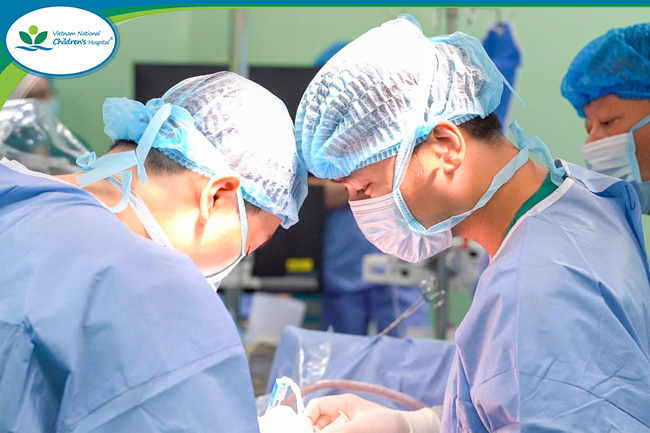
Vietnam National Children’s Hospital performs selective dorsal rhizotomy for the first time, under the guidance of experts from Alabama Hospital (USA)
In September 2025, doctors at Vietnam National Children’s Hospital successfully performed their first selective dorsal rhizotomy (SDR) for a child with cerebral palsy and spasticity in both lower limbs. This is a complex procedure requiring close coordination among neurosurgery, neurophysiology, and rehabilitation teams. Each patient undergoes a comprehensive assessment of motor function, spasticity level, and electromyography (EMG) evaluation before being considered for surgery.
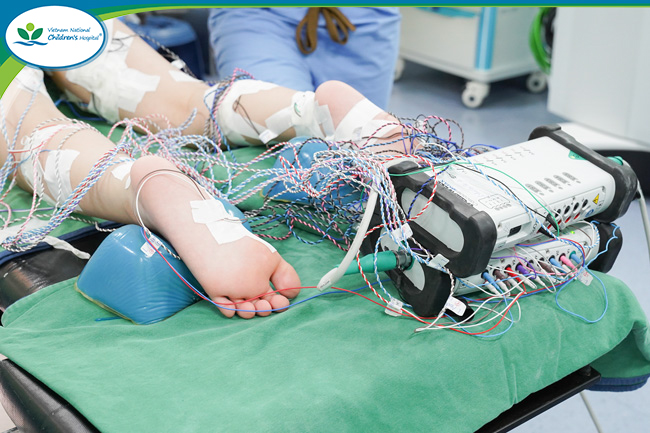
The patient undergoes neurophysiological mapping to identify spasticity-causing nerves
According to Dr. Lê Nam Thắng, Head of the Neurosurgery Department and Deputy Director of the Neurology Center at Vietnam National Children’s Hospital:
“We perform the surgery by approaching the spinal cord through a small laminectomy of the lumbar vertebrae to expose the sensory nerve roots. Simultaneously, neurophysiological techniques are applied: each nerve root is electrically stimulated, and the response signals of the corresponding muscle groups are recorded directly on a specialized system. This allows the surgical team to precisely identify the nerve roots causing spasticity, which are then selectively cut while preserving the patient’s motor and sensory functions.”
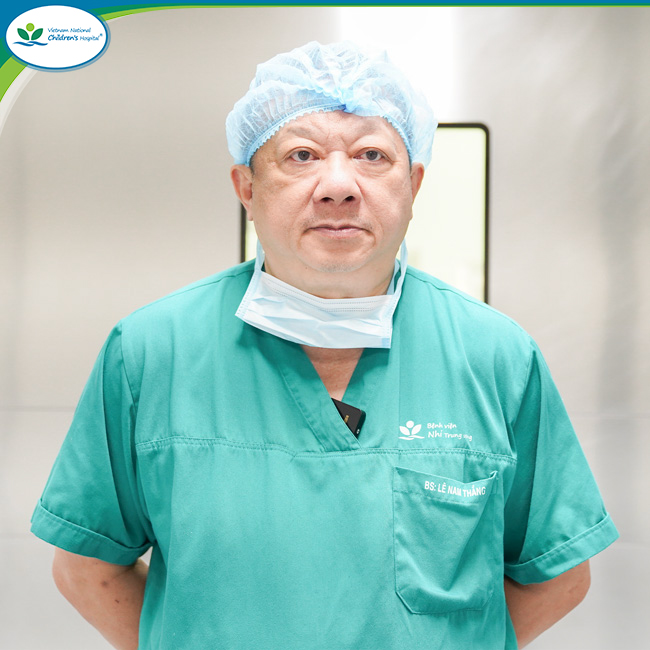
Dr. Lê Nam Thắng – Head of the Neurosurgery Department and Deputy Director of the Neurology Center – participates directly in the surgery
ThS.BS Nguyễn Thị Thảo from the Neurophysiology Department, Neurology Center, Vietnam National Children’s Hospital, added:
“Neurophysiological mapping not only helps precisely identify the pathological nerve roots that need to be cut but also plays a crucial role in preserving the nerve roots controlling sphincter muscles. This allows the patient to experience reduced spasticity after surgery while minimizing postoperative sensory-motor disturbances, particularly preserving full bowel and bladder function. This represents a significant advancement compared to previous non-selective dorsal rhizotomy techniques.”
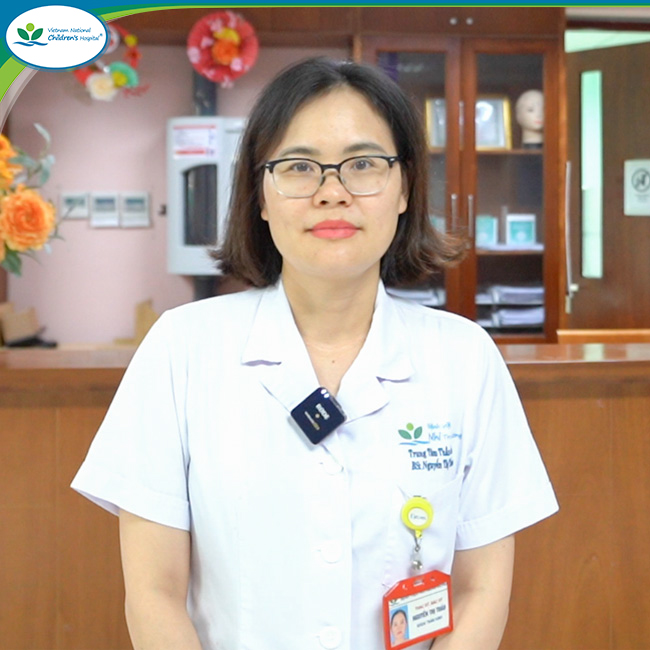
ThS.BS Nguyễn Thị Thảo – Neurophysiology Department, Neurology Center – directly performs neurophysiological mapping during surgery
Nearly a year of meticulous preparation to apply a world-class advanced technique at Vietnam National Children’s Hospital
Under the attention and direction of the hospital leadership, the Neurology Center established a multidisciplinary working group including Rehabilitation, Neurosurgery, and Neurophysiology to develop a plan, finalize procedural protocols through expert review, and select suitable patients.
One key step was personnel training. In 2024, doctors from the Neurology Center participated in an advanced training course on selective dorsal rhizotomy under neurophysiological guidance at Alabama Children’s Hospital (USA). Thanks to this thorough preparation, the doctors were professionally and technically ready and confident to perform the first surgery.
“Successfully implementing selective dorsal rhizotomy not only opens a new treatment pathway for children with spastic cerebral palsy but also affirms the Vietnam National Children’s Hospital’s capability in mastering advanced techniques in neurology and rehabilitation. This lays the foundation for expanding treatment to more children with cerebral palsy and confidently implementing other advanced specialized procedures in the future,” emphasized Dr. Cao Vũ Hùng, Director of the Neurology Center, Vietnam National Children’s Hospital.
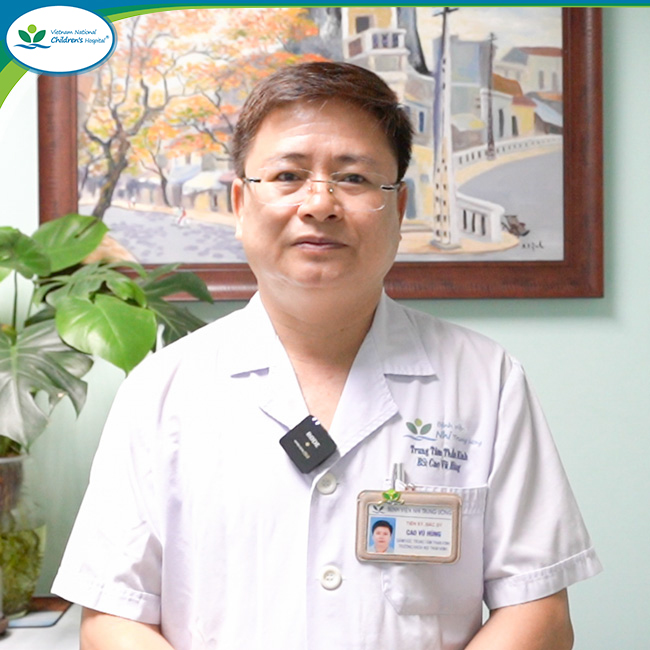
Dr. Cao Vũ Hùng – Director of the Neurology Center, delighted with the hospital’s new achievement
Rehabilitation is a key factor determining success
Postoperative rehabilitation is the key for the child to achieve significant motor improvement. As soon as the patient’s condition stabilizes, the Rehabilitation Department continues to accompany the child on the journey to reduce spasticity.
Dr. Trần Vĩnh Sơn, Deputy Head of the Rehabilitation Department at Vietnam National Children’s Hospital, said: “The child has been working with us in follow-up and rehabilitation treatment for the past eight years. Immediately after surgery, the child was enrolled in a special, continuous training program for several months. During the first four weeks, the main goals are pain control, maintaining joint mobility, and preventing deformities. After this period, a comprehensive rehabilitation program is implemented to gradually improve muscle strength, balance, and motor coordination.”

Dr. Trần Vĩnh Sơn – Deputy Head of the Rehabilitation Department – collaborates with specialists and the neurosurgery team to precisely identify the nerve roots that need to be cut

The child undergoes rehabilitation training to improve motor function
An 8-year journey of the family and the joy of seeing their child walk steadily
Behind the success of this surgery is the story of years of perseverance by 8-year-old N.P (from Ninh Bình) and his family. From a young age, he was observed walking on tiptoes and frequently tripping. When his parents took him for evaluation, he was diagnosed with spastic cerebral palsy. N.P has worn braces and undergone continuous rehabilitation training for the past seven years. This surgery marked a major turning point. Within just a few weeks, his spasticity significantly decreased, and he was able to stand and walk independently—something his family had only dreamed of before.
His mother emotionally shared: “Many times we felt discouraged seeing how difficult even the smallest daily activities were for our child—walking, bathing, studying. But thanks to the encouragement of the Rehabilitation Department doctors and our love for him, our family persevered for many years. We feel so fortunate and happy that after surgery, he can walk and stand on his own. We are deeply grateful to the doctors at the Neurology Center and the Rehabilitation Department for their dedicated support throughout this long journey.”

A new hope for children with cerebral palsy in Vietnam
The first selective dorsal rhizotomy performed at Vietnam National Children’s Hospital not only provided N.P with an opportunity to improve mobility but also opened a new pathway for treating cerebral palsy in children across Vietnam. This success is a clear testament to the intelligence, dedication, and mastery of advanced surgical techniques by the hospital’s medical team, on par with major centers worldwide.
It is hoped that in the future, many children with cerebral palsy will benefit from this technique, gaining the chance for independent movement, community integration, and a better quality of life.


